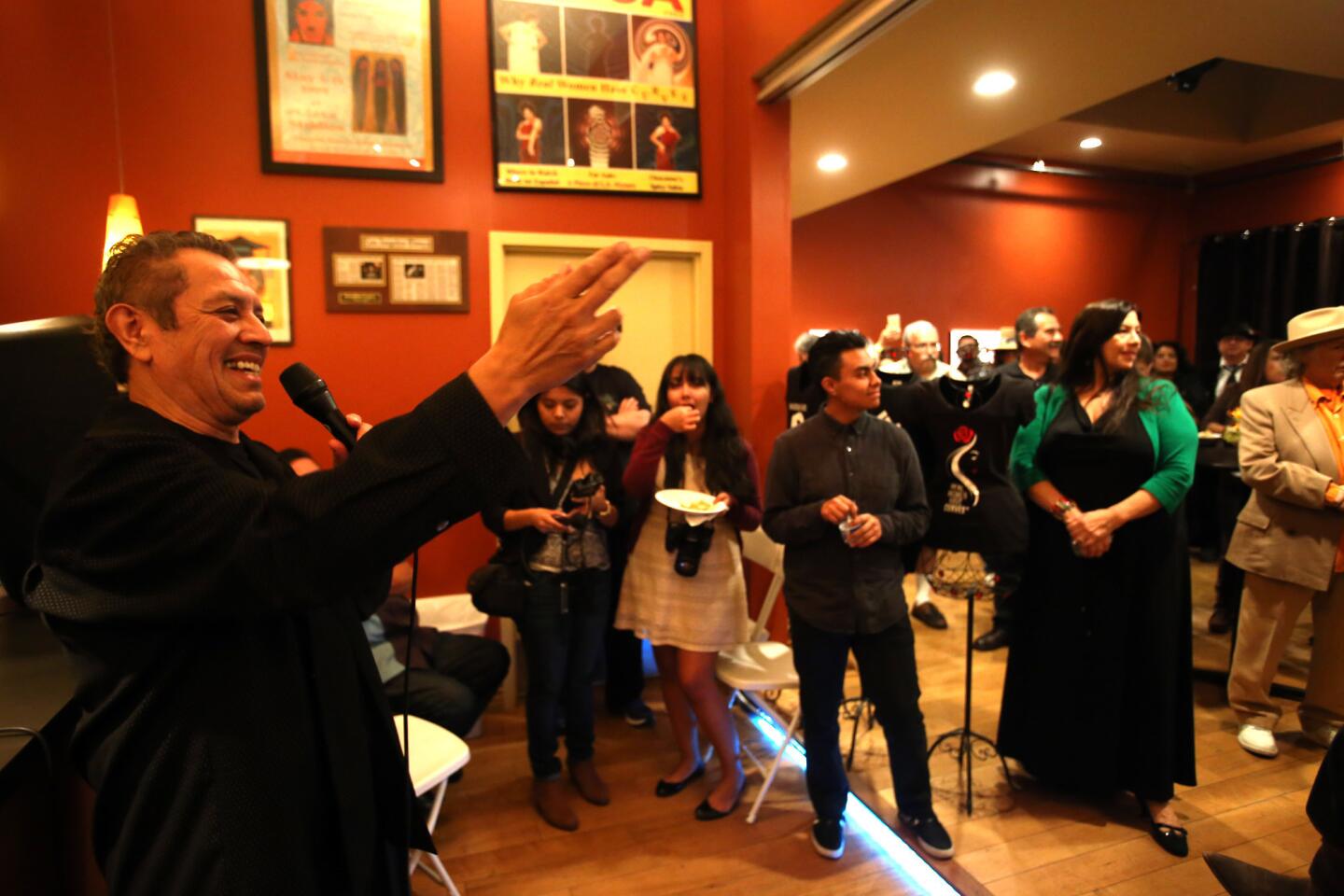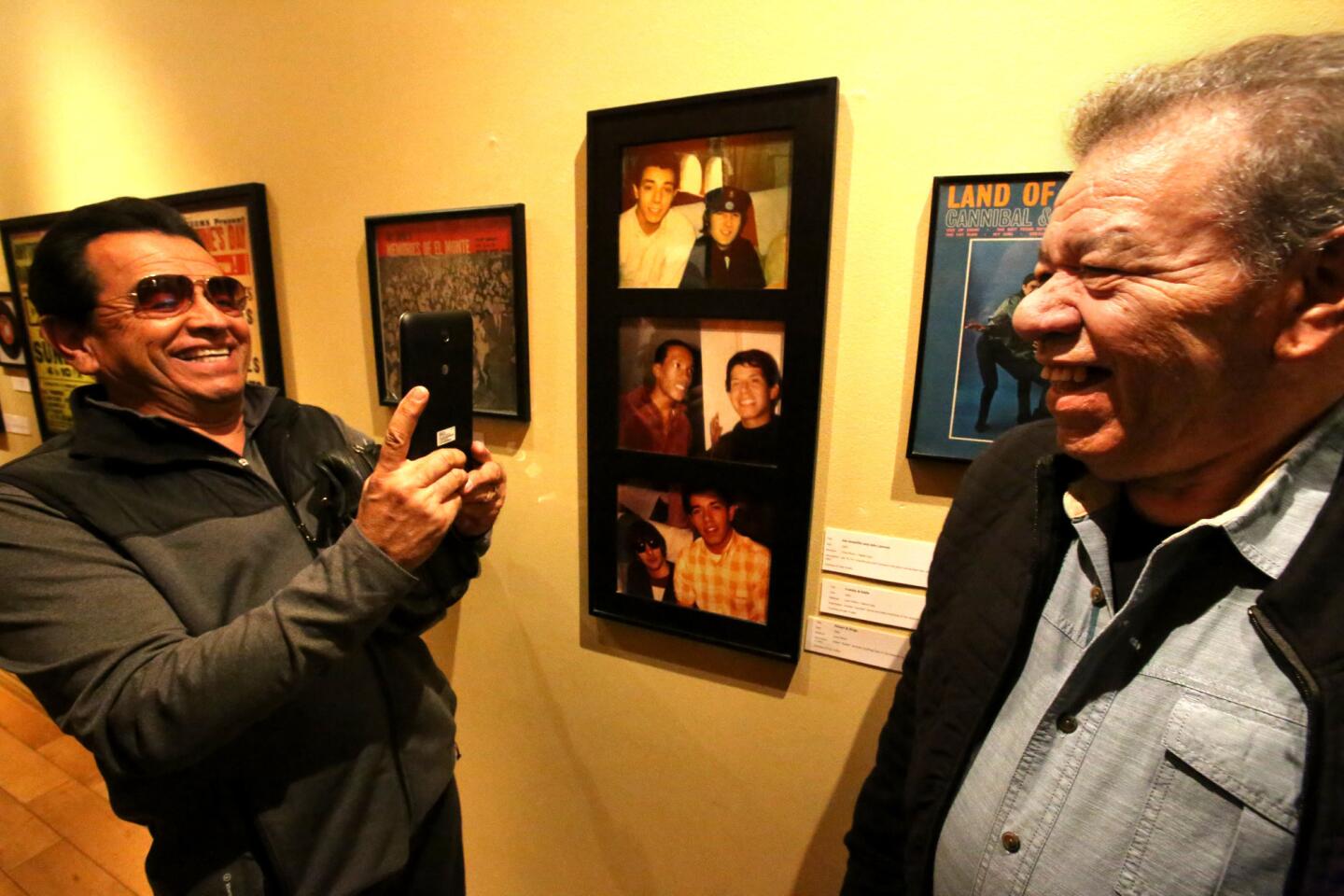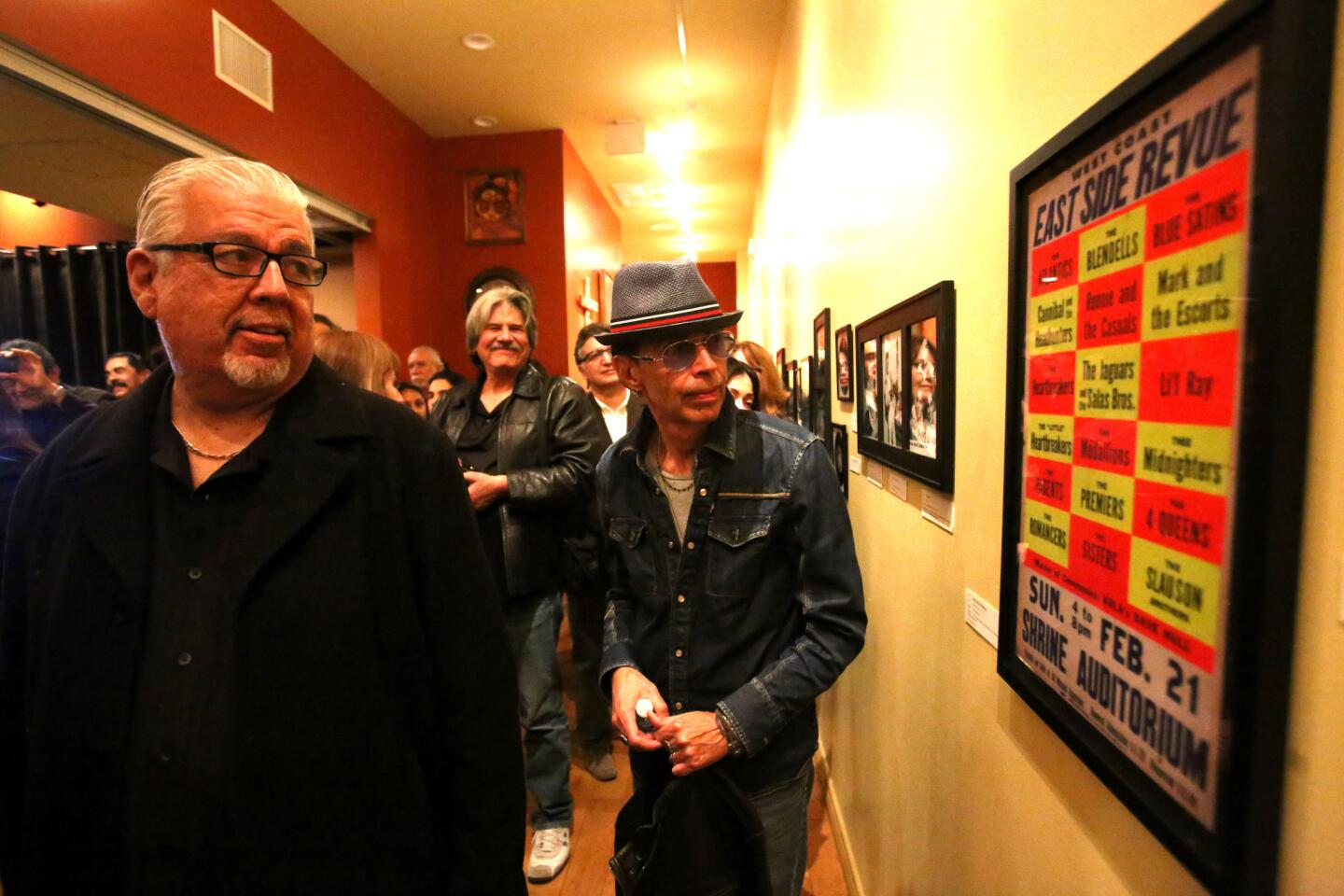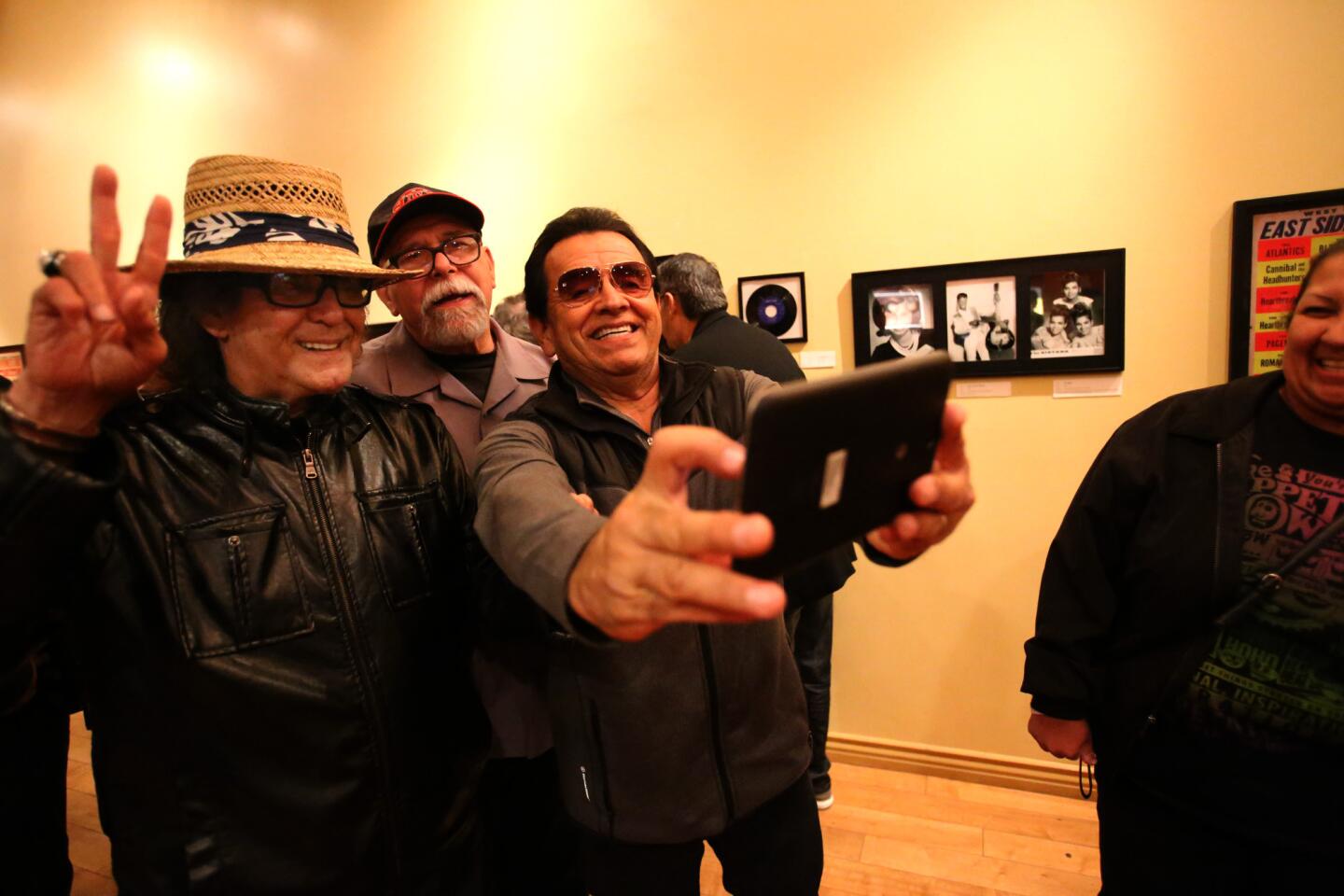Saluting ‘60s bands that put East L.A. on the map
- Share via
Robert “Rabbit” Jaramillo pointed with an unsteady hand at a black-and-white picture on a framed poster from 1965 announcing a dance show at El Monte Community Center, where his band, Cannibal and the Headhunters, was performing. His wide, half-moon eyes nearly matched those of the young man in the photo, if not for the puffy bags that have since formed underneath them.
His pompadour, still voluminous, was now gray.
“That’s what we looked like, just kids,” Jaramillo said. “It brings a lot of memories back to me … We’d get out there and we’d party. We were the act, the act! Didn’t make no difference what color you are. We’re here, we’d perform, and we’d do our best to show ‘em a good time.”
The 50-year-old picture, along with other photos, posters and record labels, is part of an exhibit at the Casa 0101 Theater in Boyle Heights, focusing on the history of Chicano rock ‘n’ roll bands. This week, about 120 people packed the small center, ate finger food and snapped photos of the artifacts.
The exhibit is meant to set the stage for a new musical called “Eastside Heartbeats,” which will make its debut Jan. 16 at the theater. Both will run until Feb. 14.
The musical tells the fictional story of a band in East L.A. in the ‘60s, but is based on the true story of Cannibal and the Headhunters, who opened for the Beatles in 1965 after coming out with their hit song “Land of a Thousand Dances.”
“It’s a critical part of the history of this city in the 1960s when Los Angeles was undergoing a transformation,” said Tom Waldman, who organized the event and wrote the musical.
Chicano artists were heavily influenced by popular white and black musical groups alike, especially rhythm and blues artists, and often incorporated those sounds with traditionally Mexican musical stylings, said Steven Loza, professor and chair of ethnomusicology at the UCLA Herb Alpert School of Music.
Only a handful of the hundreds of bands created in East Los Angeles during this period ever received record deals, and for those who did, fame was short-lived, with some musicians facing some of the same discrimination that inspired the civil rights campaigns of the Chicano movement, Loza added.
The difficult road made it even more inspirational to fans when bands went mainstream, said David Reyes, a musician who contributed his personal collection for the exhibit. He was also a composer and lyricist for the musical.
Reyes said he remembers being “mesmerized” in the sixth grade when The Premiers’ “Farmer John” record came out. In the “floating heads” style of the time, the album art consisted of cutouts of the band members’ faces.
“Some were covering the mouth and the nose, and you could only see the eyes, and they’re saying, ‘That looks like my cousin Raymond!’ ‘That looks like my friend Gilbert!’ Reyes said. “The fact that they were Mexican American kids having a hit record, you’re hearing it on the radio -- for that generation, it was a big deal.”
Jaramillo said that the band, which hailed from public housing projects, was proud to have “put East L.A. on the map.” He said they tried to not let the discrimination they sometimes faced get to them.
“For me, it was just what it was. I was Mexican American, and that’s it. Nobody could take that away from me,” he said. “Then I went out and partied with the Beatles, and it was a good time because they didn’t look down on us.”
Reyes began collecting in 1981 when he received photos from band Thee Midniters after he and Waldman, who met as young employees at Tower Records, had interviewed them for an article. From then on, he started seeking out 45s and LPs from black R&B and soul artists and Mexican American performers.
“I just decided to start buying anything and everything that I could find that was from East L.A.,” he said. “I wanted to have it at first, and then quickly I realized there was a historical element to it because some of the items were pretty difficult to find.”
The collection grew when Reyes and Waldman were doing research for their book , “Land of a Thousand Dances: Chicano Rock and Roll from Southern California.” The two said that Mexican American musicians and producers were willing to loan or donate memorabilia.
“They want younger people to see it and know what East L.A. was like at that time with this incredibly vibrant music scene,” Waldman said.
Rudy Salas, leader of the Latin-influenced, R&B group Tierra, which gained fame in the ‘80s — and also a composer and lyricist for the musical — said that’s because many musicians feel the genre has largely been overlooked.
“I’m really happy they’re doing something like this to give recognition to all the artists,” he said, “that paid their dues, did their thing, struggled, all because of a love of music.”
taylor.goldenstein@latimes.com
Twitter: @taygoldenstein
ALSO
El Niño ‘is here, and it is huge,’ as officials race to prep for winter
As fewer Californians pass the bar, are LSAT scores an early indicator of success?
Steve Lopez: What’s wrong with L.A. Unified’s leadership? Answer: Just about everything
More to Read
Sign up for Essential California
The most important California stories and recommendations in your inbox every morning.
You may occasionally receive promotional content from the Los Angeles Times.





















